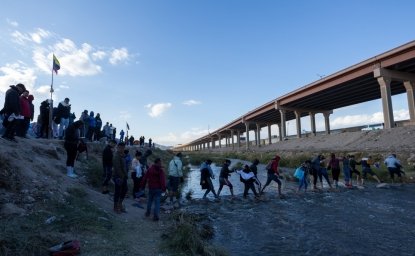In their village’s roughly 100 years of existence, residents of Boki Saboudo have experienced an awful lot of change. They’ve watched colonial empires come and go, new nation states rise, and porous borders harden. From their isolated spot along a sandy stretch of the Senegal river, which marks the boundary between northern Senegal and Mauritania, they’ve seen their lifestyles altered, for better and worse, in almost every way imaginable.
Yet none of that drama, says Idrissa Ba, the village chief, compares to the seismic changes that have roiled the area’s all-important pastoralism sector in recent years. Where once most of the villagers migrated north and east with their livestock along the river valley during the dry season, now they mostly head southwest into the bushy flatlands of Central Senegal. Where previously they usually waited until March or April to embark on their longer annual migrations, these days they’re often on the road by December, or well before, an early start that can require them to travel many hundreds of miles more to find pasture.
Even the nature of the migrating animals and humans has changed. In some instances, overly needy cattle have been replaced by cheaper sheep and goats; in others, families have partly sedentarized, leaving children to be educated at home and dispatching some of their men to guide livestock to distant pasture alone.
“The climate is not normal. The rains are not normal.”
Holding court in his compound’s shaded courtyard in the now largely unrelenting winter heat, Ba says these transformations are profoundly disorientating. “It can be difficult to know what to do. You start to question if what you know is still useful.” Pausing to collect his thoughts, he continued, “You have to change your plans constantly. This is disorientating.” Of the prime culprit he has no doubt, though. “The climate is not normal. The rains are not normal.”
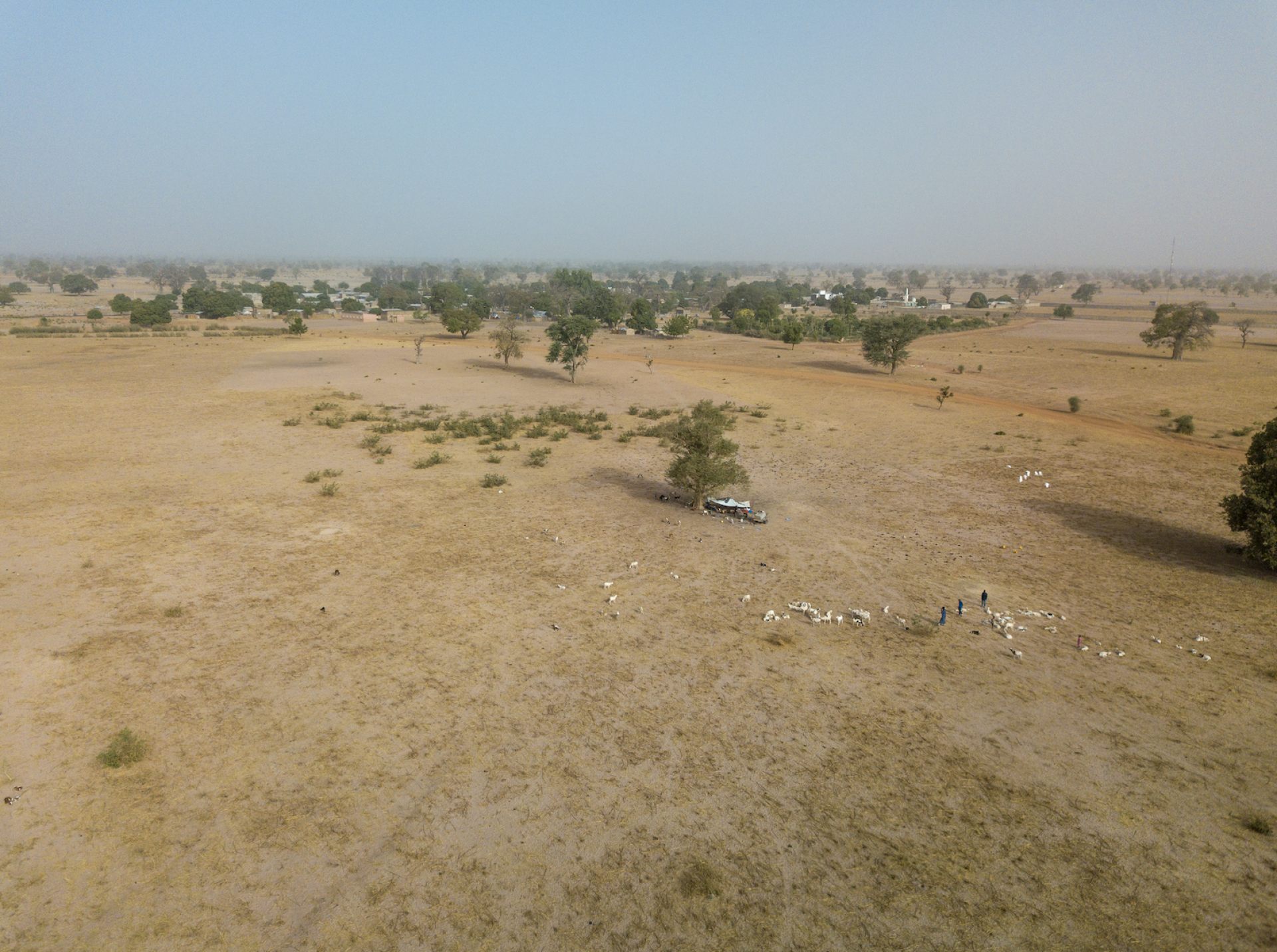
Across rural West Africa, tens of millions of pastoralists and their dependents are experiencing variations of these troubles. Almost all of them are having to at least partly alter where, when, how, and with what they migrate. Or, in the case of the most battered, rework their lives altogether. Almost all of them say that pastoralism now bears little resemblance to the practices they once knew, a dramatic reshaping of millennia-old ways within a generation. Given the number and rural distribution of communities who rely on animals for their livelihoods, few parts of the Sahel and its periphery have been spared the economic and security ramifications of this upheaval.
The precise medley and intensity of causes underlying each shifting migration varies from place to place across this enormous region. And many pastoralist challenges are deeply political. Their border-crossing and hard-to-tax ways long ago turned them into a source of suspicion to many governments. Settled farmers’ increasing political primacy has put them at a disadvantage in land disputes and the apportioning of state assistance at times of crisis. Most recently, herdsmen have developed an often highly exaggerated reputation for jihadi sympathies, which has fueled discrimination, especially against the Fulani, much the largest of the pastoralist ethnic groups.
However, through this broad array of political and geographic landscapes, some form of climate change is a common denominator in most migrations. More erratic (and sometimes weaker) rains are changing the timing and richness of desert vegetation. Fiercer heat and more frequent extreme weather events are damaging livestock health, among other challenges, and hobbling the farmers on whose fortunes pastoralists partly depend. This is all collectively weakening traditionally symbiotic farmer-herder relations, fueling further hardship – and conflict. Amid numerous non-climate woes, including governance and land rights issues, many communities are ill-equipped to manage more intense climate stresses.
Herder Chaos
In the case of the herders of Senegal’s Ferlo region, some of the most severe initial (and some ongoing) challenges to their traditional movement patterns have little to do with the climate. Starting in the early 1980s, authorities in Dakar and neighboring countries dammed the Senegal river and escalated the development of large irrigation schemes for year-round, rather than just rainy season crop cultivation, along the valley. In doing so, they deprived herders of much of their go-to dry season pasture, forcing them to seek out new sources of fodder for their livestock for a period that can stretch from early fall until the beginning of summer.
Then, over the following decades, the impact of population growth and intensifying security crises began to close off other tracts of land elsewhere within – and outside – the country. Increased demand for farmland from expanding villages around Tambacounda and other southern provinces has pushed crop cultivation deeper into pasture, to the detriment of pastoralists who had hit upon those areas as an alternative to the river valley. Worsening jihadism in neighboring Mali knocked other areas out of circulation – and also created problems for the relative few who continue to venture there. Fearful of attracting scrutiny from Senegalese security forces, Ferlo herders say that they’re careful to remove headwear or suspicious-looking messages from their phones as they near the border.
But in recent years, as these pastoralist challenges have escalated, the biggest blows have revolved around rainfall, according to interviews with dozens of pastoralists across the Ferlo in February 2022. Because precipitation is often weaker, many of them are finding they’ve all but exhausted their “home” vegetation by February, or sometimes by early September, if the rainy season has been particularly poor. That is forcing them to travel up to six or more months earlier than usual.
“Even the areas that we knew we could rely on during emergencies in the past now often have problems as well,” said Hadjel Sow.
And because the rains are increasingly weak across Senegal, one of the most drought-ridden parts of an intensely drought-ridden region, early migrating pastoralists are having to journey much further to find areas where local farmers have finished harvesting their crops, thereby freeing up attractive pasture, and that are unaffected by poor rains themselves. “Even the areas that we knew we could rely on during emergencies in the past now often have problems as well,” said Hadjel Sow, a pastoralist with over 30 years of experience migrating up and down the West African interior.
Then there’s the sheer volume of bad rainy seasons. Subpar rains fell in 2017, 2019, and 2021. 2020, by contrast, brought extreme flooding from vastly excessive rainfall, which toppled many largely mud brick villages. 2022 appears to have been a rare ‘good’ year. As with other Sahelian countries, Senegal is experiencing more bush fires, which are expunging vital pastureland around many Ferlo villages.
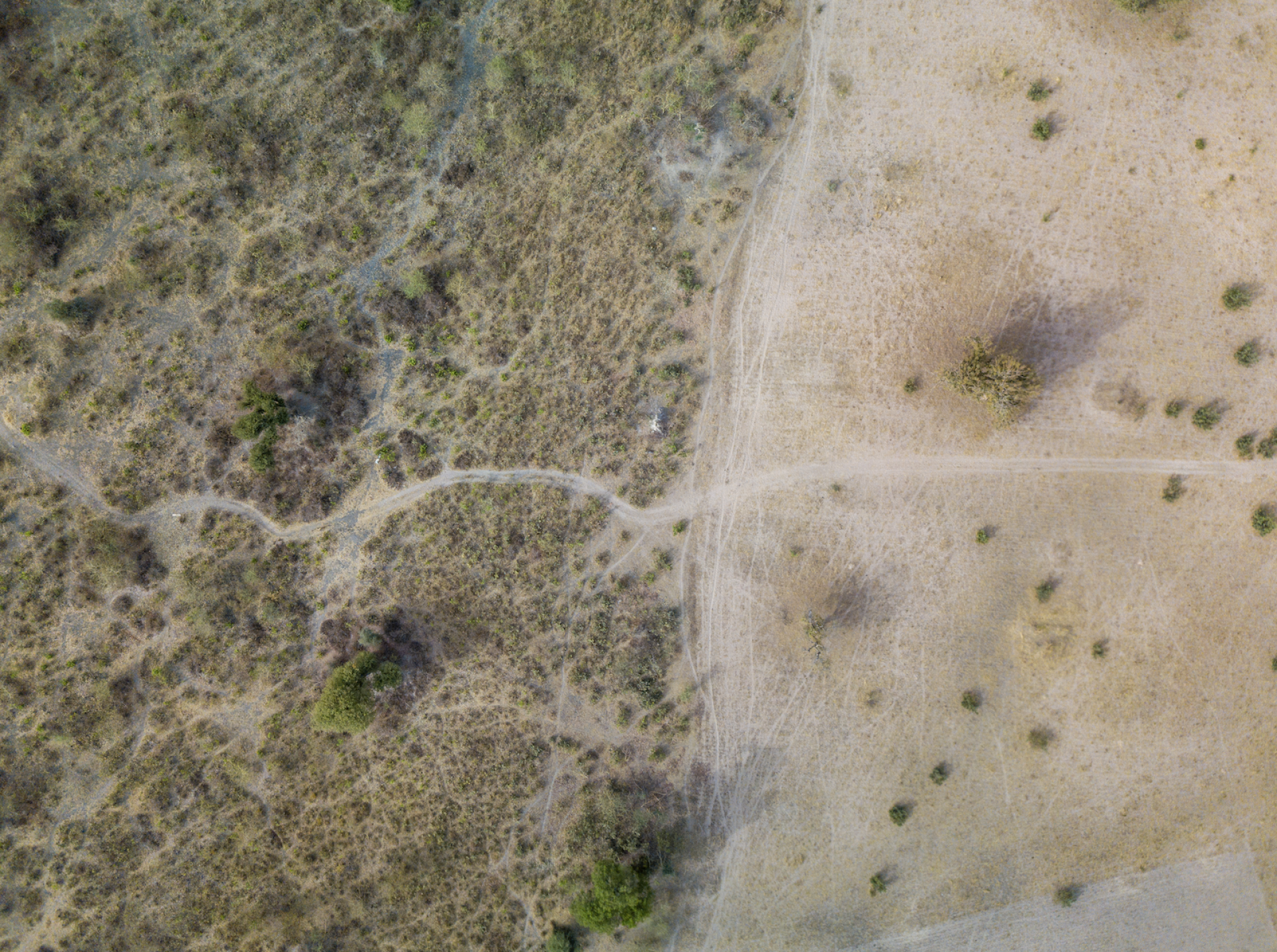
Farmer Woe
Every bit as worrisome, from a pastoralist perspective, are the knock-on effects of farmers’ own climate-related struggles. Increasingly limited or erratic rains are drastically slicing crop yields. For instance, 500 kilograms of peanut seed can yield as little as 100 kilograms of crop, as opposed to the usual four or more tons. Worried agrarian communities now plant up their fields as soon as the first rains fall, rather than waiting a month or so as they once did. It’s a farming practice that shrinks available pasture even more – and at pastoralists’ time of greatest need. “We work so hard but get so little,” said Ibrahim Djallo in Doundodji village, to the north of Linguere.
The sheer difficulty of making the ground grow has also meant that some farmers are less inclined to maintain once mutually beneficial arrangements with herders, in large part because fewer of them now have the time to keep large herds, so there’s less understanding of one another’s struggles. Historically, landowners welcomed roving pastoralists onto their fields as natural fertilizers during the dry season while providing agricultural waste for hungry livestock in exchange. This no longer holds in places. Many farmers now have access to artificial fertilizers, which has meant they have less need for livestock and, in their financially straitened states, less inclination to give away grasses that they could sell.
Increasingly, the unviability of agricultural returns is even forcing some farmers to ditch their land altogether. Many are migrating to Dakar and other Senegalese cities, or abroad, which can benefit pastoralists if the fields are left fallow. But much of the time villagers are selling out to local and international agribusinesses, many of whom ring land with fences and render it completely inaccessible to pastoralists. As in other parts of the world, when farmers sneeze, pastoralists can catch a severe cold, local migration experts say.
Economic Hardship
In economic terms, these changes have been grim for many in rural Senegal. Herds are going hungry due to limited fodder, which means many animals are too underweight and sickly to fight off disease, to give birth, or to suckle whatever young they might have. That’s cut herd sizes—and animal sizes—and hence pastoralist profits at a time when the security situation in Mali has stifled their capacity to restock from one of their traditional sources of replacement animals. Most recently, in 2020, authorities in Dakar ordered a months-long country-wide closure of all restaurants and markets as part of their COVID-19 response, which dramatically reduced meat sales.
Milk production has also fallen because of limited and less lush grass, which is further eroding pastoralist finances. “They used to get fat just like that. The grass was that good,” Amadou Ba of Weno Bouki in the central Ferlo said of his cows, a sad-looking lot with sagging skin on hulking frames. “Now look at them.” Even much of the milk that is being produced is lost to spoilage due to a lack of refrigeration in hotter year-round temperatures, adding to diminished profits.
Most arrestingly of all, hungry animals often eat whatever they can during times of extreme hardship, which in Senegal, as in other parts of Africa that are reeling from waste management crises, means they’re ingesting ever greater volumes of plastic. Colorful plastic bags festoon the trees and shrubs of the Ferlo. For a people who prize livestock as intensely as most pastoralists do, watching their animals suffocate with increasing regularity can be every bit as much a source of grief as it is an additional financial loss.
Mired in economic turmoil, some pastoralists have mimicked their farmer peers in migrating, or by moving into more lucrative professions, like gold mining. Across northern Senegal, many rural families have at least one or two relatives in Dakar or Europe, part of an extraordinary outflow from the country’s villages.
But for pastoralists, migration is generally trickier. They’re less likely than residents of farming-dominated villages to have migrated seasonally, often a precursor to permanent migration. They’re less likely to have support networks elsewhere because fewer of their kin have migrated in the past – and consequently less likely to receive the remittances that can make costly migration routes possible. Amid this crunch, many pastoralists face impossible health, education, and food choices.
“Selling animals is our only way. We are poor. But of course we are aware that this destroys our income.”
Having lost much of his herd to drought in 2019, Musa Ba (no relation to Amadou), a herder in Kojolel, had slowly built it back up to a quarter of its former size through a loan from a local businessman, but his wife’s recent cancer diagnosis is forcing him to sell his new animals to pay for her treatment. He now wonders how the family will eat, let alone pay off his debt. “Selling animals is our only way. We are poor. But of course we are aware that this destroys our income.”
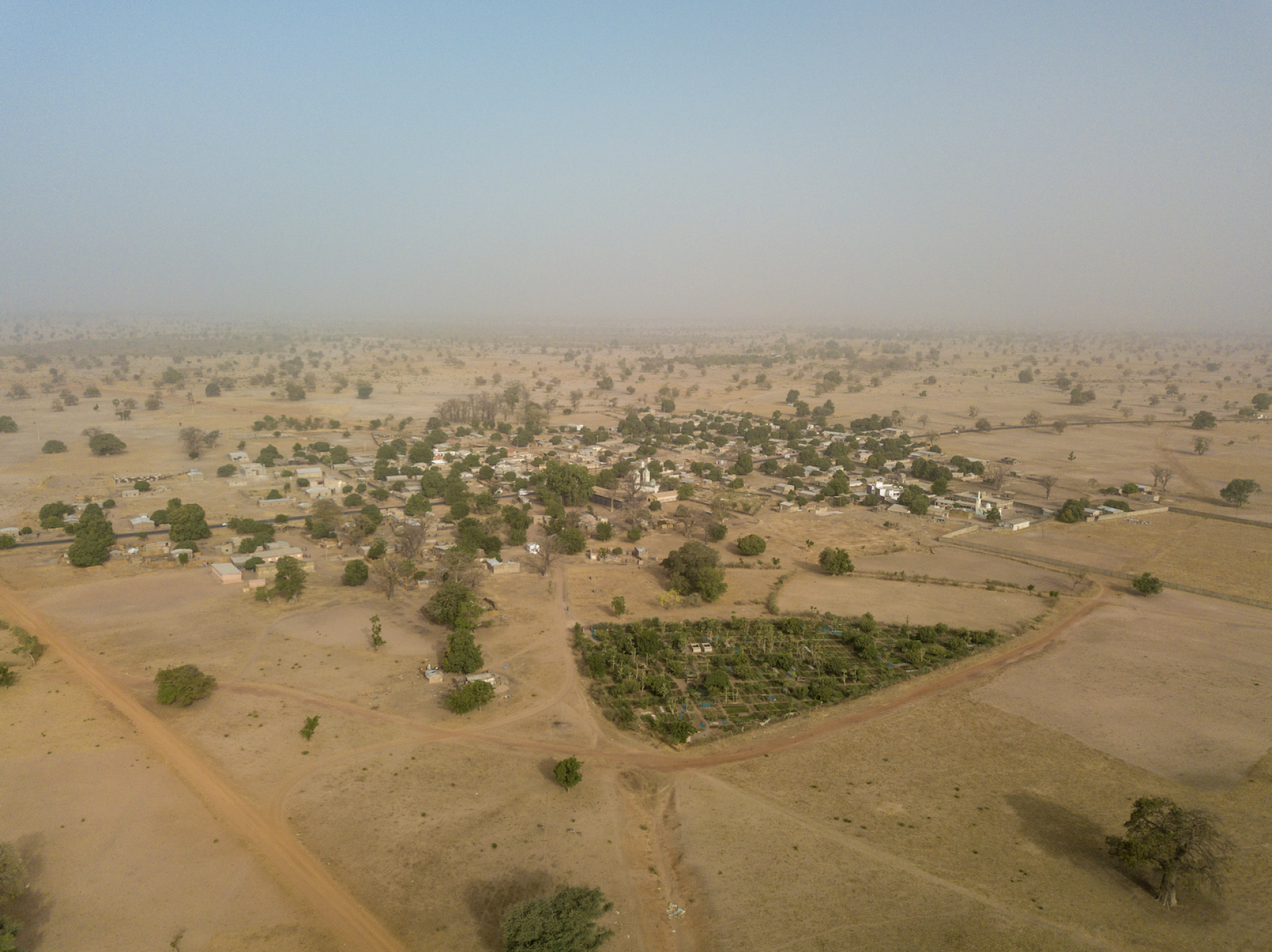
Communities in Conflict
That might not even be the worst of it, though. Because while Senegal, with its more stable governance and less intense land pressure, has avoided the scale of farmer-herder violence that’s roiled other parts of West Africa, it’s proven far from immune. Enforced changes to pastoralist migrations are at the heart of it.
By traveling early as rains vacillate, herders sometimes encroach on fields that agrarian communities have yet to finish harvesting, adding to their difficulties, and sparking more frequent fights, animal killings by farmers, and some deaths on both sides. Farmers say that migratory herders don’t respect boundaries and that they’re having to harvest before their crops have fully ripened to ensure that at least part of the crop isn’t trampled. For their part, herders say that farmers often fail to fence off their fields, and frequently gravitate towards areas that have been ‘improved’ by livestock manure. “We go back the next year and find that land is all fields,” said Mamou Sow, as he tended his family’s sheep to the south of Matam. “They expand anywhere that we travel.”
And by traveling further and into unfamiliar areas, pastoralists are encountering communities they’ve never met and who sometimes boast very different social mores. This seems to be particularly true of previously largely static herders from central Senegal, who are now being pushed by wavering rains into occasional migrations and who have alienated some conservative Ferlo communities when they’ve ventured north. Here, too, farmers and pastoralists blame one another, with the former saying that unknown herders are especially likely to disregard local rules. The latter insist that agrarian villages take advantage of pastoralists’ lack of local knowledge to expand their fields into designated transhumance corridors.
In this world of fluctuating resource access and rampant change, many pastoralists are increasingly at odds with one another as well. Sheep rustling is proliferating throughout the Ferlo, particularly in roadside communities, with mostly young jobless men stealing scores, if not hundreds, of area animals a week and selling them to dodgy butchers willing to ignore their telltale branding. Tensions surrounding overgrazing near watering holes are on the up as some villages exclude or charge migratory herders more than ever for access.
“For the moment we can manage. But what if the water situation gets even worse? All work is connected to that water.”
Those challenges, along with the impact of more extended, sometimes year-long pastoralist migrations in pursuit of pasture, are worrying security officials who fear the consequences of deteriorating social cohesion. “No problems are becoming small problems. Small problems are becoming bigger problems,” says Cheikh Gueye, chief gendarme at Ouro Sogui, a large town on the Ferlo’s eastern edge. “For the moment we can manage. But what if the water situation gets even worse? All work is connected to that water.”

A Rosy Future?
Madjen Madigniang, a herder who’s spent 60 years migrating from Deali village near the holy city of Touba, is in a somewhat upbeat mood when asked about his community’s long-term prospects. Unlike pastoralists in most other parts of the world, he and many of his Sahelian peers have experienced this scale of environment-related hardship before—between the late 1960s and mid 1980s, the entire region experienced deadly, often famine-inducing intermittent droughts. Few are panicking now. “Things are hard now, very hard,” he said. “But we’ve seen bad conditions before.”
“Things are hard now, very hard,” he said. “But we’ve seen bad conditions before.”
These days, pastoralists have more tools to navigate the fallout, such as cellphones, which have enabled them to glean information on where the best pasture lies ahead of travel. There’s more targeted media, like AfricaPinal and Radio Ferlo FM, an NGO-led radio station that broadcasts animal husbandry advice, weather forecasts, and more in Pulaar, the dominant pastoralist language and one that’s often neglected to their detriment. There’s a much bigger meat-eating market, particularly among Dakar’s burgeoning middle class.
Crucially, these men and women are also learning superior coping techniques. With limited fodder, some herders are shifting from cattle to sheep and goats, which require less food and are cheaper to buy – though experts counsel that ‘true herders’ would never countenance the switch to small stock due to the perceived loss of prestige. NGOs are much more present in Senegal than most of its neighbors due to the superior security situation. Hundreds of organizations have rolled out training on everything from repairing degraded land with compost and manure, while also pushing pastoralists to plant up some of their own grasses for animal consumption.
But in some ways, things are tougher than ever, according to almost every case study interviewee. The sheer unpredictability of climate change, rather than the scarcity it sometimes brings, can be exceptionally hard for pastoralists to navigate. A number of past interventions to ease rural conditions have created problems of their own, such as partial political decentralization, which has generally empowered settled farmers over itinerant herders. And once unsettled, inter-communal relations, like those between farmers and herders, can be very challenging to piece back together.
In recent years, AVSF, an agricultural NGO, presided over the creation of 25 ‘unités pastorales,’ groups that have enjoyed some success in better coordinating the placement and maximum size of herds within the Ferlo, and thereby temper disputes among pastoralists. However, a similar government scheme to reduce farmer-herder conflict appears to be flailing. Interviewees wonder if its forced introduction might even unsettle previously peaceful areas where local elders have hit upon workable conflict resolution mechanisms.
Still, even as the challenges mount, few appear to doubt that pastoralism as a way of life will persist in some form. “People will go to new places, to old places, with some of the family, with none of the family,” said Idrissa Ba, the chief of Boki Saboudo.
“I might not recognize it. But it will still survive.”
Author

Environmental Journalist

Environmental Change and Security Program
The Environmental Change and Security Program (ECSP) explores the connections between environmental change, health, and population dynamics and their links to conflict, human insecurity, and foreign policy. Read more

Explore More
Browse Insights & Analysis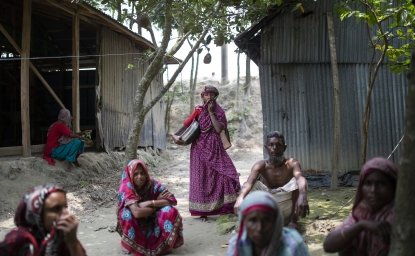
Climate & Migration
